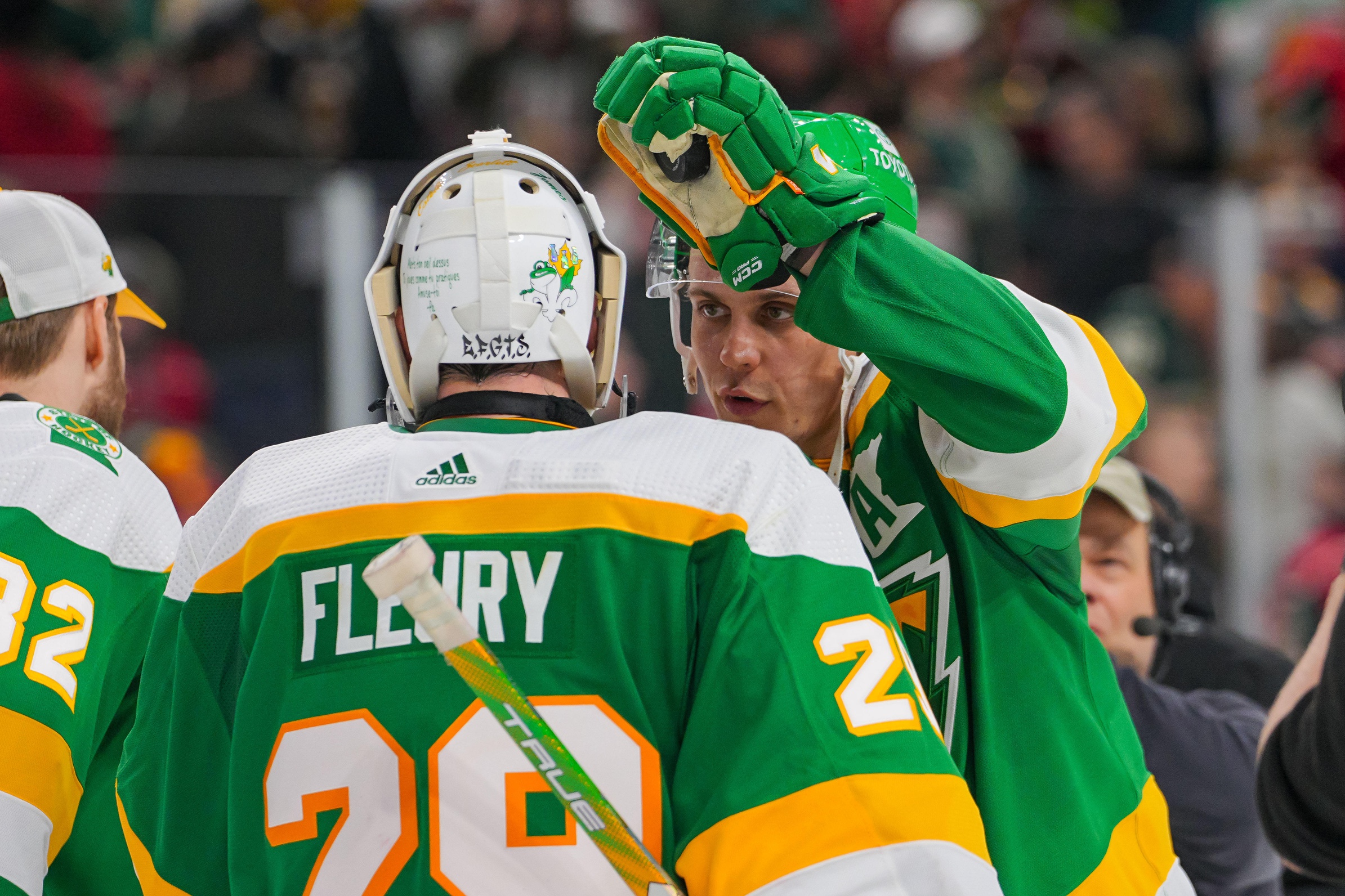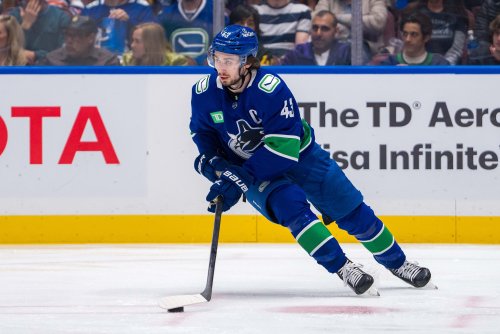
John Hynes is pressing all the right buttons just over a month into his tenure as Minnesota Wild head coach. The results speak for themselves – an 11-3-0 record and renewed belief among Wild fans this team can make a run to the playoffs and possibly further.
At the beginning of December, it was easy to write off the Wild’s improved play as the traditional “new-coach bump” that seemingly always follows a change at the helm. But now it’s late December, and the wins are still pouring in. It’s time to start removing the “new-coach bump” from our rhetoric when explaining what is happening in Minnesota.
This version of the Wild is what fans were hoping for coming into the season: a fun, exciting product that can score with talent and defend with depth.
There are a bunch of fun stats you could dive into to discover what’s working. It’s more than improved shooting percentages and vastly improved goaltending. Simply put, Hynes has given the Wild their identity back.
It starts with his lineup configuration. Hynes came to Minnesota, a team in complete flux, discovered what each player does best, and put them into a position to maximize their use. His ability to make a top-line of his best forwards work together was the start. Hynes did not come in with years of preconceived thoughts on players like Evason had become prone to at the end of his tenure. And so, Hynes removed Kirill Kaprizov from Mats Zuccarello’s hip and placed him next to Matt Boldy and Joel Eriksson Ek instead. They have one goal when on the ice: control the puck and score.
A second line of the remaining high-end scorers, Zuccarello, Marco Rossi, and Marcus Johansson, were also clicking. No longer playing with superstars on their wings, each player on the second line has felt no pressure to feed one person. Instead, they are a perfect complement to the top line.
For the first time all year, the Wild also seem to have a line with a checking identity. Hynes put Marcus Foligno with Frederick Gaudreau and Pat Maroon to do the dirty work. Hynes’ greatest contribution has been creating a specific role for each player without deviating from it.
At the end of his run, Evason consistently placed players into roles that didn’t fit their strengths. When the Wild’s top-6 suffered injuries early in the season, Evason occasionally made Maroon a winger on the second line. He did fine in that role, but it doesn’t allow Maroon to play to his true strengths. Therefore, not only did Minnesota's second line lose a player to injury, but its checking line no longer carried the same punch. Same with Foligno. He’s best when forechecking an opponent’s top forwards, not trying to set up the Wild’s top forwards in a top-6 role.
Hynes has clearly identified the roles he wants his players to fill. When Zuccarello departed the lineup last week with injury, Hynes turned to fourth-line winger Ryan Hartman to fill his void on the second line. Sure, it seems like a no-brainer to replace your top scorer with a former 30-goal scorer, but it’s the kind of move that speaks to Hynes’ acute ability to place the right players in the correct roles. Keeping Foligno, Maroon, and Gaudreau together as a bruising shutdown line has allowed all three to thrive.
Perhaps nowhere has this attempt to place players into specific roles been more noticeable or impactful than on the penalty kill. Under Evason, the Wild preferred a rotating cast of forwards on the kill. It’s tough to say if Evason did so in an attempt to even out the minutes played or if the thought was fresh legs are the best legs. Regardless, it didn’t work. Miscommunications were everywhere, and a league-worst penalty kill converting under 70% of their opportunities was a primary contributor to Minnesota dismissing him.
Hynes chose a different route, rotating between two sets of forwards and placing the onus on those four to lead the way. When it’s not the Brandon Duhaime and Connor Dewar pairing on the ice, it’s been Eriksson Ek with Foligno. In their first game following the Christmas break, those four accounted for 96% of the short-handed time-on-ice among all forwards. The only other forward to record any time on the kill was Gaudreau’s 0:24. However, that was late in the game, and Hynes wanted a right-handed face-off option on the ice.
It's worked. They’ve jumped from killing less than 70% of opposing powerplays to slightly below 80% under Hynes.
The Wild were lacking an identity for most of the season. Were they going to be a high-octane offensive team like they were two years ago? Or were they going to depend on a deep blue line and elite goaltending like they did in the second half of last season?
The answer to both questions was no. Identifying what this team does best and what each player brings to the lineup was difficult. Hynes has changed that. That sense of identity has been one of the biggest reasons for their turnaround, perhaps enough to get the Wild back into a secure playoff position.
Think you could write a story like this? Hockey Wilderness wants you to develop your voice, find an audience, and we'll pay you to do it. Just fill out this form.








Recommended Comments
Join the conversation
You can post now and register later. If you have an account, sign in now to post with your account.
Note: Your post will require moderator approval before it will be visible.